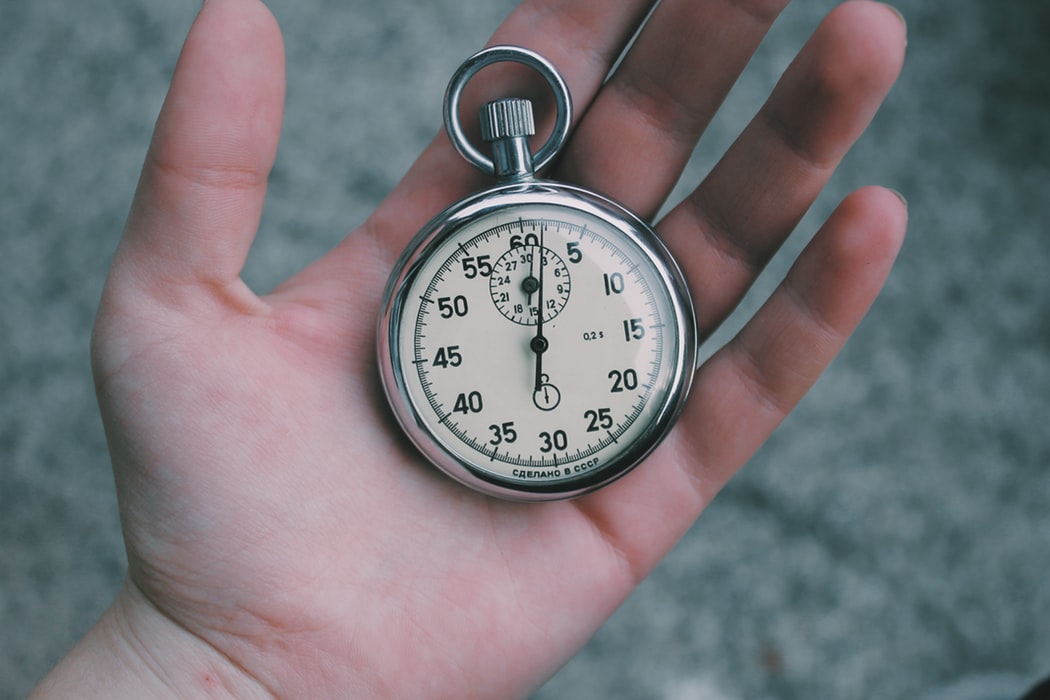Race Timing Best Practices
Introduction
Perfection on the first try is -- well -- a long shot. As the all too familiar quote goes “practice makes perfect,” and becoming an expert RFID race timer requires testing, patience, and experience.
Compiled below are tips and tricks that can give a new race timer a leg up and help even seasoned race timers refresh their memory. Practice does make perfect, but a little cheat sheet never hurt anyone.
RFID technology has revolutionized the timing industry. Even if you have experience with a manual system, when you start timing with RFID, you are basically starting from scratch. Building your own system or even purchasing one comes with a lot of questions and possibly not a whole lot of answers. This Dos and Don’ts of Race Timing infographic will help with race day preparation and answer the questions running through your head.
Race Timing Dos
1. All equipment should be tested before race day in case your system was damaged from the last race or has an automatic setting that isn’t compliant with your software. Plan ahead and thoroughly test your equipment, even if it is brand new. It is very important to work out all the kinks in your system so that there are no big surprises on race day.
2. Have a race day checklist and use it. Relying on your memory to bring all the equipment, parts, and accessories is not an effective way to ensure race day goes smoothly. With a checklist, you can keep your equipment organized and know you will have everything you need the day of the race.

3. Bring spares in case of equipment failure. Spare antennas, antenna cables, reader(s), and mounting equipment are useful in case of an emergency. If a runner trips over and snaps a cable, or an antenna falls and is damaged, your backup equipment will be there. The show must go on.
4. Do you know the feeling when your computer throws an unexplained error, and you have no idea what to do? The same thing could potentially happen to your race timing software or system. Always know the ins and outs of your race timing system. If error 873 occurs, and you know the system inside and out, you can easily take care of the issue and get the race back on track.
5. When lugging around large and heavy pieces of equipment, there are always potential problems. Whether your cable snags the baby car seat, or the N-Type connector is dragged along the concrete, your cables can become less effective or unusable. Inspect your cables prior to race day. Cables could potentially have been damaged in transportation.
6. Power loss is not something that typically comes to mind as a potential problem on race day, but it is a large issue that can take down your entire system. Build a battery backup system or use an Uninterruptible Power Supply (UPS) to support your equipment in case of power loss. If you have a plan in place for a power surge or a complete power loss, your race can keep running without a hitch.
7. Quality versus Quantity is a century old debate that can be applied to everything you purchase. People want more for their money, but for some, purchase quality is the most important factor. Always use the highest quality cable . Cables connect your entire system together, and without the proper quality, LMR rating, and length, they could put an abrupt stop to your race day reads. Checkout our Guide to Cables, Connectors, and Adapters.
8. When you wake up with a fever of 103 on the day of your biggest race of the season, what do you do? Train others to run your system in case you need an extra hand. If you are timing multiple races in one day, it helps to have trained employees. Now, you don’t have to turn away other races and money.
9. You are a part of a growing, ever-changing industry fueled by innovations in technology. Communicate with other race timers. The success of RFID-based race timing is dependent on networks of experienced race timers sharing ideas to improve the industry.

10. Each type of RFID antenna has different read zone strengths; without testing there is no way to predict the best read zone width. Test the field limits for each antenna to ensure it covers your expected read zones. Don’t leave your race that night brooding over the read that got away.
11. Test the placement of RFID tags on the runner based on the read zone of the antenna. Tagging the runner’s bib while the antenna’s beam is aimed at their feet will get you 3 reads out of 300, so make sure the antenna’s beam is headed straight for the RFID tag. With linear antennas, additional attention is required when deciding whether the tag should be vertical or horizontal.
12. When the participants finish the race, they usually linger near the finish line to rest or cheer on their friends. Adjust your software to ignore multiple tag reads. Capture the first read and ignore duplicate data. If you do this pre-race, it will cause less confusion and eliminate duplicate reads, which would skew results.
13. When packing battery powered equipment, remember to charge and power up all equipment BEFORE an event . If there is a power failure and none of your equipment is charged, the backup battery supply or UPS will not last long if it has to power all of your equipment.
14. Show participants how to appropriately apply the RFID tag to ensure you capture as many reads as possible. If “Stick it under your shoe laces” is the only instruction given to the participants, there are going to be missed reads. YOU know what the directions mean, but inexperienced racers may not fully understand the intended meaning, which leads to tags carelessly shoved into tightly tied shoes.
15. Whether you can’t leave to get lunch, or you are left with an unmanned read zone, additional help never hurts. Bring or coordinate volunteers to help you on race day.
16. In case the unthinkable happens, use a manual timing system (or stopwatch) as a backup in case the RFID timing system goes down.

Race Timing Don’ts
1. How you transport your equipment before and after a race is extremely important. As much as you want to throw your cables in the car and hit the road, remember they damage very easily. Never fold your cables. This will damage the cables and lessen or eliminate their ability to transmit a signal to your readers .
2. Electromagnetic interference is a disturbance that affects an electrical circuit because of electromagnetic induction from an external source. Do not run other cables in proximity to your antenna cables. Electromagnetic interference can greatly increase the signal loss in your cables and antennas .
3. Would you let your new iPhone get hit by a sprinkler or leave it outside on a day with a 50% chance of rain? Never let your RFID equipment get wet . Unlike an iPhone, readers and antennas don’t come with a warranty for user errors.
4. Anyone who isn’t trained should not set up your hardware. Damaging cables and equipment is possible if you don’t know what you are doing . Because smashing an SMA female connector into an RPTNC male connector Will. Never. Work.
5. If you have a cable malfunction or an antenna that didn’t transport well, the only way to know is to test them. Do not wait until the day before an event to get your equipment ready. Clean, test, and prep your system for the next event immediately after the last one. If your antenna is broken, and the one you need is out of stock, there is not much you can do if your race is the next day. Always be prepared.

6. Do not depend on the venue to supply power – bring your own. Even if you aren’t timing a remote hiking trail, you never know if you will have access to a power outlet nearby.
7. Before you tackle timing a race with two antennas and 600 participants, remember this important advice - do not leave cables in the open. Cover them to avoid tripping participants and volunteers. Not only will your RFID system be grateful, but a runner with a sprained ankle won’t end up giving your company unwanted publicity.
8. Weather is not an exact science, so when that rain or snow chance is higher than usual for your area, always expect the worst. Do not leave weather to chance; be prepared with a tent or shelter if precipitation is expected.
9. It is race day, and you are seeing record breaking high temperatures in the area. You are afraid of your reader overheating, and you spot a small trashcan around the same size as the reader. Should you bring it over and place the reader inside the trashcan? No. Do not use an improper enclosure for readers or antennas. Metal reflects RF energy, and sufficient cooling is necessary for these devices. If you are in an area with soaring temperatures, you might want to look at custom enclosures for your equipment.
Before reading this infographic, did you know the three biggest don’ts regarding antenna cables, or when to start prepping your equipment for race day? Now you do!
Conclusion
If you would like to learn more about all things RFID, check out our website, our YouTube channel, comment below, or contact us.
To read more about RFID race timing, check out the links below!
- 4 Types of Race Timing Systems
- From Marathons, to Mountain Bikes, to Motocross - Timing Your Race with RFID


